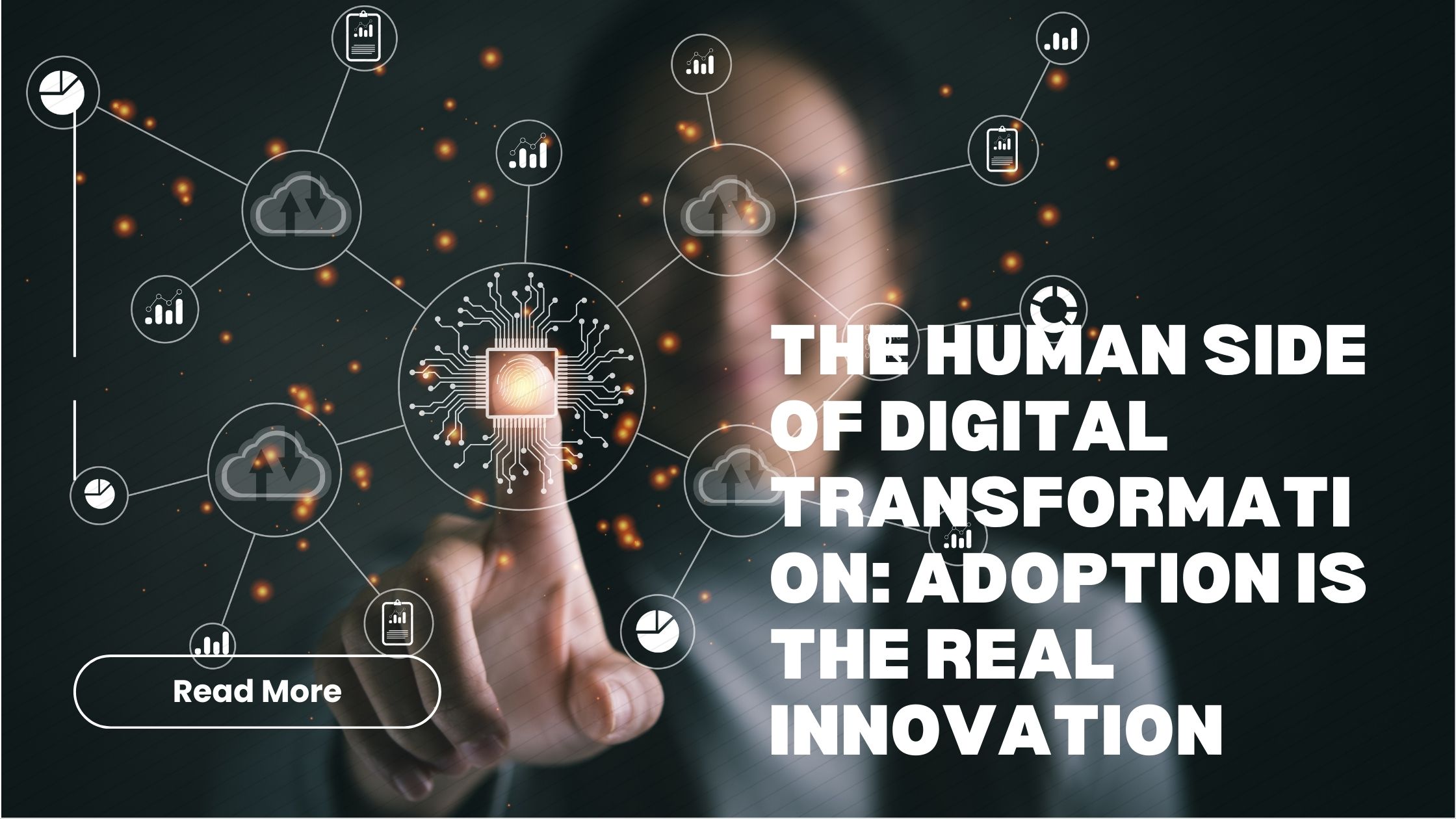The Human Side of Digital Transformation: Adoption is the Real Innovation
Digital Transformation: It’s Not Just About Technology It’s a necessity for organizations aiming to thrive in an ever-evolving landscape. Companies are racing to adopt cutting-edge technologies that promise enhanced efficiency and better customer experiences. But here’s the twist: having the latest technology at your fingertips doesn’t guarantee success.
The real innovation lies not in the tools themselves, but in how well they are embraced by people within the organization. Digital adoption transformations hinge on human behavior, attitudes, and skills. When employees fully engage with new technologies, businesses unlock their true potential.
As we delve deeper into this journey of digital transformation, let’s uncover what makes adoption so crucial and explore strategies that empower companies to flourish through effective engagement with technology.
The Importance of Adoption in Digital Transformation
Adoption is the heartbeat of digital transformation. New technologies alone won’t drive success; it’s how people embrace them that truly matters.
When employees actively engage with innovative tools, organizations witness a surge in productivity and morale. It’s not merely about implementing advanced software or systems; it’s about ensuring everyone feels equipped and excited to use them.
Resistance often stems from fear of change. Providing clear communication can help alleviate these concerns. Training sessions create confidence, allowing staff to explore new capabilities without hesitation.
A culture that prioritizes adoption fosters collaboration and creativity. Teams that work together using shared technologies can solve problems more efficiently and generate fresh ideas.
When technology aligns with human behavior, businesses unlock their full potential—a true hallmark of digital adoption transformations.
Common Challenges in Adopting New Technology
Adopting new technology can feel like navigating a minefield. Many organizations face resistance from employees who are comfortable with existing processes. This reluctance can stem from fear of the unknown or concerns about job security.
Training is another hurdle. If team members don’t receive adequate support, they may struggle to use new tools effectively. This leads to frustration and decreased productivity.
Integration issues often arise as well. New systems need to align seamlessly with established workflows, which isn’t always straightforward. Discrepancies can create bottlenecks that hamper progress.
Additionally, budget constraints play a significant role in adoption challenges. Investing in cutting-edge solutions requires resources that some companies might not be ready to allocate.
Measuring success becomes tricky when defining clear metrics for digital adoption transformations isn’t prioritized early on. Without proper benchmarks, it’s hard to evaluate whether the changes are making an impact or simply adding layers of complexity.
Strategies for Successful Adoption
Successful adoption requires a tailored approach. Start by involving employees early in the process. Their insights can shape how technology is integrated.
Training sessions are crucial. Offer hands-on workshops where staff can explore new tools in a safe environment. This builds confidence and reduces resistance.
Create a feedback loop. Encourage users to share their experiences and challenges with the new system. Use this information to make necessary adjustments promptly.
Communication is key throughout the journey. Keep everyone informed about updates, timelines, and benefits of the transition.
Recognize early adopters within your team; they can serve as champions for change, helping others navigate through uncertainties while fostering enthusiasm around digital transformation efforts.
Real-life Examples of Companies that Prioritize Adoption
Many companies have successfully navigated digital adoption transformations by putting people first. One notable example is Microsoft, which transformed its workplace culture to embrace cloud technologies. Their approach focused on comprehensive training programs that empowered employees to adopt new tools confidently.
Another case is Adobe, which shifted from a traditional software model to a subscription-based service called Creative Cloud. By prioritizing user feedback and providing ample resources for onboarding, they created an environment where customers felt supported throughout their transition.
Salesforce also stands out with its emphasis on customer success teams. These dedicated professionals help clients adapt to the platform effectively, ensuring seamless integration into business processes.
These organizations illustrate how prioritizing adoption can lead to greater innovation and productivity in the long run. They demonstrate that successful digital transformation goes beyond technology—it’s deeply rooted in fostering human connections and understanding user needs.
The Role of Leadership in Driving Adoption
Leadership plays a critical role in driving digital adoption transformations. When leaders embrace new technologies, their enthusiasm can influence the entire organization.
Visionary leaders create an environment that fosters innovation and open communication. They encourage teams to share ideas about how technology can improve workflows and enhance productivity.
Effective leadership involves providing support during the transition. This includes offering training sessions and resources tailored to different learning styles. By investing time in employee development, leaders help mitigate resistance to change.
Moreover, transparent communication from leadership helps clarify goals and expectations around new technology initiatives. It builds trust among team members who might be hesitant about adopting unfamiliar tools.
Leaders should also celebrate early successes related to digital transformation efforts. Recognizing achievements motivates employees and reinforces the benefits of embracing new technologies as part of their daily routines.
Conclusion: Embracing the Human Element in Digital Transformation
Digital transformation is more than just implementing new technologies. It’s about the people who use those tools every day and how they adapt to change. Embracing the human element in digital adoption transformations can make all the difference.
When organizations prioritize user experience, training, and support, they foster an environment where innovation thrives. Leaders must recognize that technology alone isn’t enough; it’s the willingness of employees to embrace these changes that drives success.
By understanding challenges and employing effective strategies for adoption, businesses can unlock their full potential. The journey may be complex, but with a focus on fostering engagement among employees, companies can navigate the path of digital transformation smoothly.
As we move forward into an increasingly digitized world, let us not forget that behind every technological advancement are individuals ready to contribute their unique talents and knowledge. Prioritizing their needs will create a culture of growth, resilience, and ongoing innovation—a true hallmark of successful digital adoption transformations.




